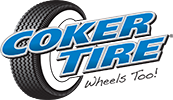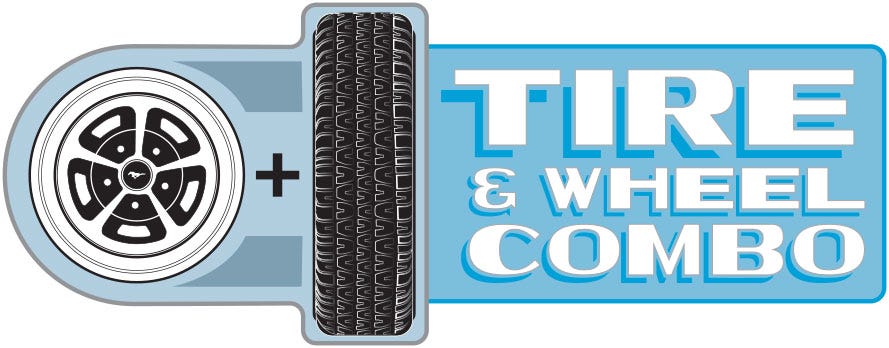Bias Ply or Radial | What is the Right Choice for Your Collector Car?


When it comes to building a collector car, choosing a set of tires proves to be one of the most challenging aspects. Size, brand, style and construction are big factors in the selection process and even a slight misjudgment can result in poor driving characteristics or a lack-luster appearance. That’s why it’s important to do your homework before buying a new set of tires, and that's why we make a big effort to educate our customers. In this article, we're going to dig into the differences between bias ply and radial tires, and how these differences affect the ride quality and appearance of your collector car.


There is a definite visual difference between a Coker Classic H78-15 bias ply tire (left) and a Coker Classic 225/75R15 radial tire (right). The bias ply tire features a squared off shoulder while the radial tire features a more rounded shoulder. Bias ply tires typically have a taller sidewall and narrower contact patch. These two examples are closely matched in size, but the bias ply construction allows for a wider whitewall.
There are many differences between bias ply and radial tire construction, but the main one is the manner in which the ply cords are run. Inside a bias ply tire, the cords are run diagonally at a 45-degree angle from bead to bead, overlapping in a crisscross pattern. There are typically four layers of ply cord inside a passenger car tire, but truck tires have more layers. Many of the bias ply tires that we offer came with nylon cord material originally. We now produce many of them with polyester cord material, which is much more durable.
You won’t find many bias ply tires on the rack at your average tire shop, but we offer them in many brands and sizes. Our most popular brands are BFGoodrich and Firestone, but we also offer bias ply tires in Excelsior, US Royal, Pro Trac, Premium Sport and more. We build our bias ply tires in refurbished original molds, or sometimes develop a new mold based off of original drawings.
Early tube-type bias ply tires featured a slightly different angle in which the tire's bead met up with the rim. Many of our bias ply tires, especially those manufactured to fit 13-, 14- and 15-inch wheels are tubeless tires, meaning they have the updated bead design and do not require a tube unless your wheels are not air tight (wire wheels). You can still run a tube inside a tubeless tire if your wheels are not sealed.
Bias ply tires are authentic for cars built from the 1900's through 1975. European auto manufacturers made the switch to radial tire construction in the 1950's, but American manufacturers didn't phase out bias ply tires until 1975. Bias ply tires were still produced well into the 1980's, but radial tires became much more common, because they typically handled better and offered increased tread life. Coker Tire manufactured and sold bias ply tires exclusively from the 1970's until the 1990's. There were no options for a wide whitewall radial during that time frame.


The advantage of a radial tire is undoubtedly the enhanced performance. Rather than running the cords diagonally, radial tires feature cords that run straight across (90 degrees from the tire’s centerline) from bead to bead. This helps stabilize the sidewall and tread patch, while using less ply material. Additional strength comes from layers of steel belting that reside beneath the tire's tread. These design characteristics provide more flexibility, and allows the tire to better conform to the road's surface.
Radial tires also offer longer tread life, and increased traction. Radial tires typically have a wider tread surface. This increased contact patch offers more stability, while the rounded shoulder provides additional traction in hard cornering situations. Radial tires also feature tread siping, which helps evacuate water from the tread surface, and thus, increase wet weather traction.
Coker Tire was the first company to introduce a wide whitewall radial tire, and did so in 1994. It changed the face of the antique tire market, and the line of nostalgia radials continues to grow. Now, Coker Tire offers whitewalls, redlines and gold line tires in both bias ply and radial construction. Another revolutionary product is the American Classic bias look radial, a tire that features the appearance of a bias ply tire with the handling of a modern radial.


In this example, we have a Firestone Deluxe Champion 670-15 bias ply tire on the left and an American Classic bias look radial 670R15 on the right. Both tires feature a narrow tread pattern, piecrust shoulder and same basic profile. Even the sizing nomenclature is the same, so there is no confusion when it comes to cross referencing the bias ply and radial tires. While the Firestone is more authentic for 1950's automobiles, the American Classic bias look radial has the same vintage look without the finicky handling characteristics. Whether you want authentic bias ply tires, modern radials or even something that bridges the gap, Coker Tire has you covered!
If you're working on a Pre-WWII car, do not fear! We have many options to fit your original wheels. This includes the new American Classic Model A+ Radial, the Excelsior Stahl Sport Radial and the Coker Classic 16-inch Radial. For later model cars, from the 1940's through the 1970's, we offer bias look radials and standard P-metric radials in American Classic, Coker Classic and BFGoodrich brands. Finally, if you're working on a muscle car, we offer bias ply AND radial tires versions of BFGoodrich Silvertown and Firestone Wide Oval tires.
When the Rubber Meets the Road
So, what's the best choice for your car? It's all a matter of preference. We encourage enthusiasts to choose a tire based on the intended purpose of the vehicle. If it’s a concours-level restoration, then bias ply tires are a must. If it’s a car that will be driven on a regular basis, the radial tire may be your better option. The seat of the pants difference is significant. Bias ply tires tend to find the ruts and breaks in the pavement, causing a wandering feeling. This can be a bit unnerving, but it's how these vehicles handled from the factory. Upgrading to radial tires offers an instant change in ride quality, as the radial construction skims over the imperfections in the road, and provides a smooth, quiet ride. An important note is to never mix bias ply and radial tires on the same car. While this may seem like a harmless mixture, it can cause your vehicle to handle poorly. A car bias ply tires on one end and radials on the other can be a REAL handful--the front of the car wants to do one thing while the back does a different dance.







